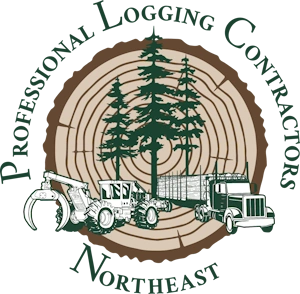As I See It: Biomass and Free Markets
As I am writing this month’s article, the 112th Congress is being sworn in and attempting to prioritize their agenda, focused on jobs and the economy while trying to reduce the federal deficit. What that means to us as rural resource providers and small businesses is yet to be determined.
When you think about the size and scope of our government and how to fund it, I don’t envy our policy makers. Trying to prioritize projects and programs for the fiscal year is generally where the arguments begin. One would think that national defense, social security, and infrastructure such as roads, bridges, and the power grid would be high on the list. Having a strong, yet broad energy policy should also have great importance when it comes to our economic strength and national security.
As you all know, biomass looks to be a large part of our logging and energy future. The American Loggers Council has been paying close attention to the status of the Biomass Crop Assistance Program (“BCAP”). This program was intended to create an incentive for loggers, forest landowners, and communities to support new biomass based markets. I personally am against any subsidies, but the BCAP program could provide essential short term assistance for loggers who wish to enter into an additional market. BCAP was specifically set up to make payments to the eligible owner of the biomass being delivered to qualified biomass conversion facilities, not the facility itself. What seemed to happen in cases nationwide was the opportunities that the program was supposed to create did not materialize because the wood using facilities reduced delivered prices, canceling out any increase the logger may have received to invest in or upgrade biomass handling equipment.
Generally loggers don’t have access to grants, economic development funds, tax abatements, etc., like when there is a proposed project or facility. If there is no reasonable long term security for a market, and no certainty that feedstock supply will not be compromised by artificial constraints, no one in their right mind should invest in some of the most expensive equipment in the forest industry to produce the lowest value material.
In my home state of Wisconsin there is a proposed WE Energy/Domtar biomass project receiving a significant amount of opposition. One of the main reasons for opposition by other forest industry companies is the lack of available material. Like many regions in the country, Wisconsin has lost five major wood consuming mills in recent years totaling around one million cords of wood fiber with no home. When our state was at those harvest levels, including the extra one million cords, we weren’t harvesting our annual growth or the allowable cut. The WE Energy/Domtar project if approved would only use 13 % of the lost volume or about 370,000 tons per year. One can’t help but question if the real concern is really the lack of logging capacity to produce the material that is available to supply all the markets, both traditional and new.
The only leverage we loggers have in our industry is availability of multiple markets and the freedom to sell our forest products where we see fit. With the biomass industry emerging in different parts of the country, loggers may have an opportunity to diversify their businesses. Many of our equipment manufacturers would also welcome the new biomass markets as they could expand and develop biomass harvesting equipment, providing many quality jobs. In the end, healthy free market competition in our industry for wood fiber and its uses will benefit our forests, rural communities, and the economy.
Matt Jensen is the President of the American Loggers Council, which represents over 50,000 logging professionals in 30 states. Matt’s operation, Whitetail Logging, is headquartered in Crandon, Wisconsin.. For more information please contact the American Loggers Council office at 409-625-0206 or e-mail at americanlogger@aol.com.

